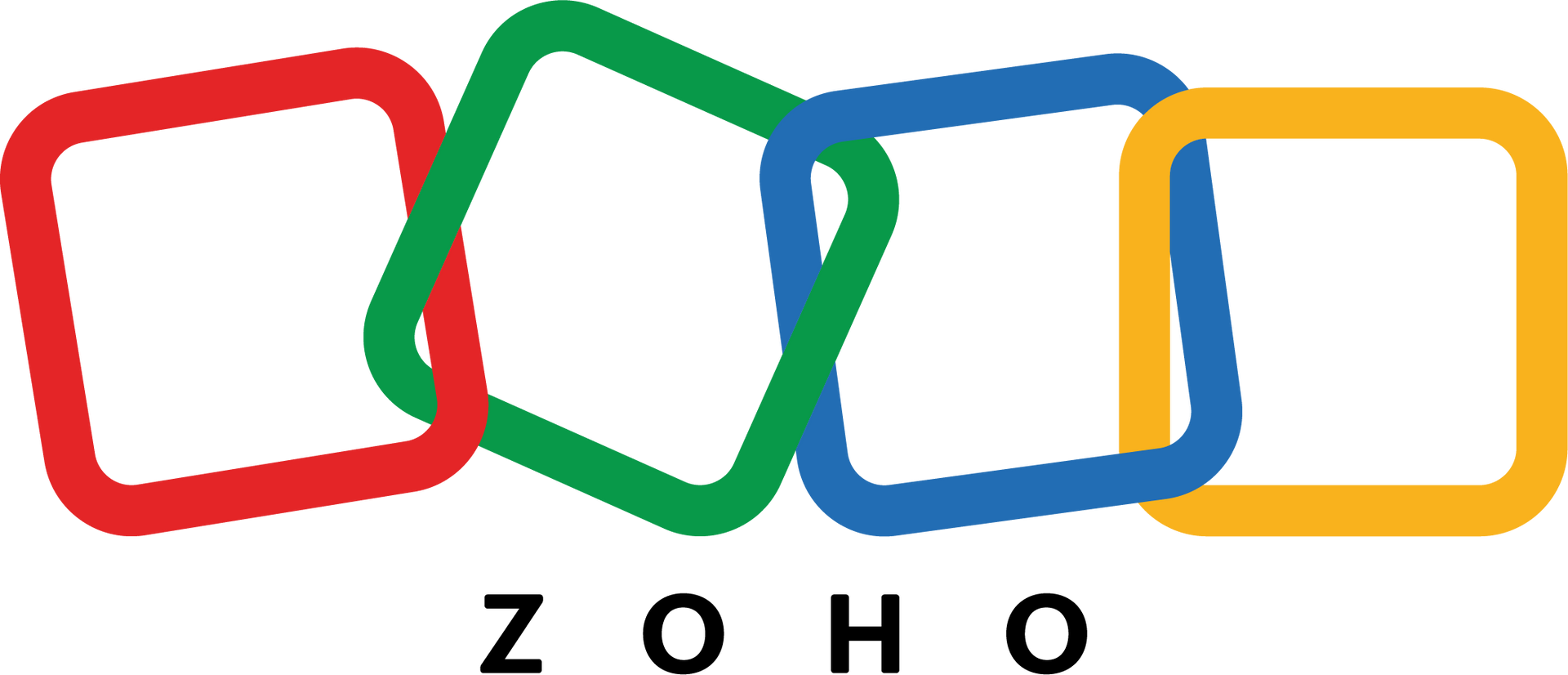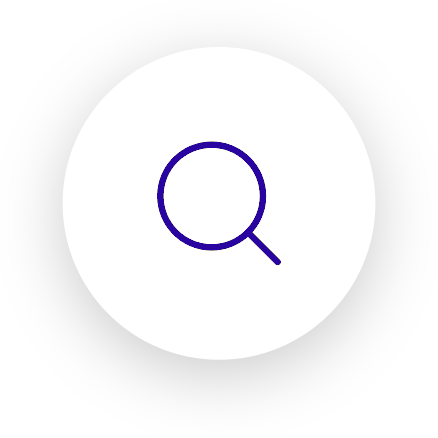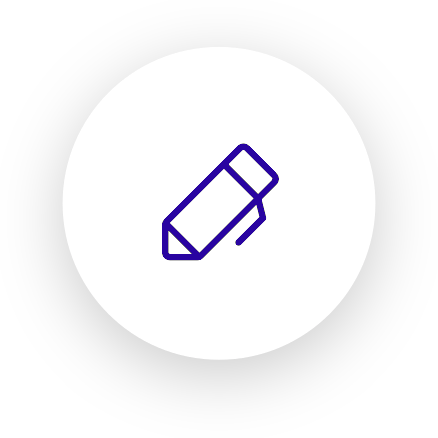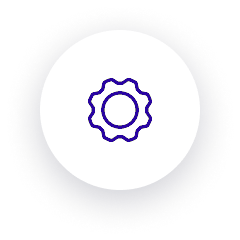Why WordPress is not always the best choice
If you have a website, or started some research to build one, you would most likely have come across WordPress. WordPress is the most popular Content Management System (CMS) for websites and has by a fair distance the largest market share amongst all websites. But, as we have pointed out in an earlier article already, there are over 1 billion websites out there, and most of them reside in the obscurity of inactive websites nobody visits. Most of which are also built on WordPress. Simply put, that market share alone is not a compelling argument to opt for WordPress when it comes to your website.
Another argument often put forward in favor of WordPress is its relatively low cost. Costs are your money, so this is an important aspect. Right? But which costs exactly? The initial costs to launch some nice looking content? Or may be the cost of ownership over the life of your website? Or rather cost in relation to the generated income and the resultant return on investment (ROI)? WordPress might be very low cost to launch, but depending on your business objectives, it can be a poor choice from the perspective of your costs of ownership and ROI.
As a professional technology partner, we do not favor one CMS or one platform over another. Our role is to understand your business objectives and your future plans and then recommend and build you a solution that is fit for purpose. Fit for purpose means a solution that effectively supports the realization of your business goals at the best value for money. And if there is a conflict between your objectives and your budget, we tell you upfront and work with you on a realistic plan. We don't take your money today, to cause you disappointment further down the line. Partners don't do that, do they?
Let's have a closer look at some of these considerations. We use WordPress here as a base reference since it is the most popular CMS in use. But this article is by no means against WordPress.

Why Free is not really Free
Let's get this off the list first. Nothing is for free. WordPress is an open source CMS and is made available for free. And there are lots of themes and plugins for WordPress which are also available at no cost. This creates the perception that WordPress is a cost effective solution. Unfortunately, there are also a number of website design agencies who use this (incorrect) perception as a selling argument.
The creators and makers of WordPress, and all those "free" themes and plugins are not altruistic Not-For-Profit Organizations. None of them is. Truth is, they are all very profitable private enterprises. That profit comes from website owners who build with WordPress. Yes, correct. The initial CMS is provided for free, but once you are on it, you will end up paying. If you want to build something reasonably decent, you will be purchasing commercial plugins and themes, unless it's your original plan to sink into the obscurity of those millions of websites nobody visits. Together with a (often underpowered) hosting plan all the bits and pieces easily add up to $40 - $50 per month. That' is not free anymore.
Lastly, there are also other CMS platforms that are open source and freely available. They usually require higher initial development effort to build your site compared to WordPress, but the cost of ownership is very often lower. On the other hand, we also have an advanced CMS, which is not for free, but the cost is mostly lower than a WordPress site with commercial themes and plugins, and it has no hidden costs.
The Website or Web Application Process
The process to create, launch and run a professional website or web application, typically involves 5 steps or phases.
Discover
This step is the first step for a reason. It primarily prevents future disappointment, costs and frustration. Unfortunately, many web designers are not developers, and their solution design virtually always involves the CMS they are most familiar with. In this scenario, the Discover phase is often cut short or even skipped.
We insist on this step. It's our investment to earn your trust. If we were to cause you future disappointment and frustration with a poor solution design that does not support your business objectives, we wouldn't be a trusted technology partner, would we? We recommend that you insist on this step also, to ensure your website is optimally supporting your current and future business goals.
Design
Once we understand your objectives we can design a solution. This step considers aspects like how and where do we store your data, what user interface is required, what technology and CMS do we use, how do we host and power the site or application etc. If the complexity of the requirements are low, data is predominantly in the form of text, such as a blog, and e-commerce transactions are not intended to become large in volume, WordPress is very often a favorable CMS to consider. Contrary if functionality is likely becoming more complex over time, or you plan to grow your e-commerce channel into a serious sales machine, then WordPress may not be your best choice to opt for. We are not saying you can't if you insist, the point is the WordPress path is likely going to cost you more than better performing alternatives. And that's what we would discuss and explain to you at this stage.
Develop
Once we are past the first two steps, you can sit back and relax. At this stage, leave it to the experts like us to build and develop the agreed solution. With a professional partner you can expect regular progress feedback and previews of the asset that's being created. You should also be gradually onboarded on the CMS and how you can manage the website and its content after it's gone live. Towards the end of this phase your key personnel should be trained and familiar with the CMS and how to operate the website after go-live.
Launch
That's the most exciting and final part of the project. Your newly created or revamped asset goes live into the public domain, it's ready to attract visitors, excite them, engage them and do business with you.
At this point, if all has gone well, you should be roughly 80% through the project. We say the project to create your website or application. Not the effort to make it do what it should do!
Customize
Initially here you'd go through the final 20% or so of your project. It's fine tuning and tweaking the site to fit into your business processes and needs, making some final adjustments and getting your personnel proficient with the CMS.
It is now becoming crucial if your original business objectives have been taken into account in the solution you have by now. If not, frustration will start to kick in soon. Also, your business needs and circumstances change, and your website needs to keep up with it in order to support your needs and goals. If the solution is not flexible enough, frustration and disappointment too will kick in. This is why we, and so should you, insist on step one in this process. At this point you'll start paying for the short cuts you took at the onset. Usually, the project is only 20% of the entire effort. 80% of the effort happens in this last phase. If your solution is not carefully designed and future-proof, this can become expensive 80% of effort!
Advantages and Limitations of WordPress
Let's start with some advantages of a WordPress based website.
Advantages
- Speed and Cost to Launch. If your requirements are simple a WordPress site can be very fast and relatively cheap to deploy and publish. WordPress comes with a large library of pre-built themes for many use cases which can be customized to a certain extent. This is a clear advantage if your content is generally static, has little dependencies between different data, you are not overly fussy about design and branding and the use case and purpose of your website is unlikely to change materially in the future. Typical use cases are blogs, company profiles, portfolios and possibly even a simple e-Commerce store to show case and sell a few products.
- Extensibility. The WordPress ecosystem boasts a large number of pre-built plugins to add specific functionality to your website. They are easy and fast to install. As tempting as this may be, it does come with limitations as we will see below. Simply put, if your requirements are simple, of low complexity and a low likelihood to require future customizations and changes it can be a good option to stick with WordPress and a couple well maintained plugins.
- Usage. The caveat about ease of use first. What's easy and what's complicated is quite a subjective judgement and often a poor argument to choose a website platform or framework. If you know nothing about something, it always requires an initial effort to get to terms with it. Once you are used to something, it's always considered easy. Having said that, if you have ticked the above and at this point WordPress is still a feasible option, you intend to do a lot of updates to your site by yourself and you are not a developer, then the WordPress CMS is likely a good choice.
Disadvantages
- Flexibility and Customization. As much as the pre-built themes can be an advantage, they can turn into a disadvantage. You can only customize your themes to the extent the creator of the theme, which is not you, has provided for. If your branding, which can be critical to set you apart from others, is more sophisticated the theme can limit you. And keep in mind, not only today, also in the future. You would then need to invest into developer resources to tweak and adjust the theme to your requirements. This is rarely recommendable, as those customizations on a child theme need to be maintained on an ongoing basis as WordPress itself and plugins get upgraded over time. We often find our advanced CMS, which let's you customize nearly everything and is as easy to use, soon becomes a better choice, in particular if you consider paying for the upgraded version of your WordPress theme.
- Functionality and Dependency on others. If something is not built by you, or for you, then you are dependent on the creator. This is the biggest drawback of WordPress' plugin approach. Yes there's a plugin for virtually everything, but they are all created by different developers, and not all are equally well maintained over time. Whilst WordPress itself is very well maintained and continuously upgraded and improved, many plugins are not. It's then a matter of time until it breaks and your site won't do what it should do any longer. Here again, you'll likely have to invest money in the future to get a fix. The same applies to many of the themes too.
- Future-proofness. WordPress itself as a CMS is future-proof, but it's limitations with regards to customization and functionality do not necessarily make it a future proof choice for your business. Businesses by their nature evolve and with that, the requirements for your website change too. The digital world is fast paced and new innovations emerge at every corner creating new ways to connect and engage with your stakeholders. In most cases, your online channels would need to keep pace to take advantage and provide a competitive edge. As mentioned above starting to tweak and customize the core of WordPress themes and plugins can turn out very complex and moreover costly. It can ruin your return on investment, just like a complete change of your website can sink your SEO ranking and cause significant damage to your brand. It is always better to start with the right toolset from the beginning. Changing course later, can be painfully costly.
How to make a choice
There are many platforms and frameworks available to build and maintain a website or web application. They all have their advantages and disadvantages. It is rarely a good strategy to make a subjective choice based on a personal preference or someone's familiarity with a particular framework. Subjectivity is biased and not usually a successful approach to make business decisions. We recommend to apply an objective approach and weigh up the pros and cons based on your actual and anticipated business needs. The below points may provide some guidance:
- Invest in Discovery: As we already mentioned, time spent on the Discovery phase of the above process, is time well spent. Do not cut it short. It's there to prevent future disappointment. Clarify your current business requirements and develop some scenarios about your anticipated future needs. What do you want to achieve in the short, mid-term and longer term future? What's you vision and what shall your website or web application contribute to that vision?
- Consult with a partner: Seek advice from a competent technology partner you can trust. A partner can explain and provide guidance what options are available, what their advantages and disadvantages are. That can be mapped against your business needs to create an objective decision matrix. Our Free Consultation service is a great start for such a conversation.
- Costs and Budget: Evaluate costs and benefits from multiple dimensions. Consider all costs, domain, hosting, initial development, themes, plugins, extensions, integrations etc. A partner can help you create cost transparency. As you consider different solutions and options for your website, ensure that you compare like for like. Multiple small expenses easily add up to more than one moderate expense. Take your actual and potential future costs into consideration and assess contingency costs. Compare your costs to measurable benefits and compute the returns on your investment for different scenarios. At the end, your project should add tangible value to your business and limit the risk of losses.
- Don't ignore Customize: The last step in the above process is there for a reason. As we have mentioned, this phase usually consumes most effort and with that cost. Just because it's in the future, doesn't mean you can ignore it today. Doing so could easily screw up your business case. The decision about your website solution, which you make today can have a large impact on your future customization efforts and expenses tomorrow. As already said, starting with the right toolset from the beginning virtually always ends up in your favor. Changing course later can be painful. And if you have to change course, do so as early as you can to minimize your losses. We have seen it too often where businesses throw more money into a poor solution in an attempt to recover it, instead of pulling the plug early. It usually increases losses and pain.
- Be careful with Big-Bang: We have emphasized this point already in an earlier blog post. If you have a bold vision and plan it is usually not recommended to go for all-at-once. The risks of project failure, delays and escalating costs increase disproportionately. Structure your project into phases and manage by stages. Choose a solution that is flexible enough to make adjustments as you go through your project phases. The end result may not always be clear from the beginning, so you need to remain flexible to get the best result at the end that works for you.
Conclusion
The choice of WordPress is often made because it makes it seemingly quick, cheap and easy to get a website published. Reality is that it is a bit harder to build the right website, built on the most suitable platform that caters for your current and future needs and delivers the best returns on your investment. This does by no means negate the benefits and advantages of WordPress. It remains a great CMS with its valid and rightful place.
But to make the right choice, requires some homework to be done. As with most things, without that homework being done thoroughly, the end result is likely going to be disappointing. We are here to avoid that disappointment and help you with that homework. The best way to start and realize your objectives is to book a free consultation with us and have a chat about your plans.
Blog








